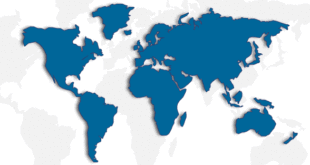While Competition law is at its very beginning in Africa, it has yet to achieve any semblance of common measure with the regulation implemented in the EU. There are however an increasing number of States and supranational institutions that implement competition rules having a strong effect on the African M&A practice. There are many supranational institutions in Africa dealing with competition issues. This paper focuses on the Common Market for Eastern and Southern Africa (COMESA) Competition Regulations. The intention of the COMESA institutions is to establish a ‘one-stop-shop’ for merger filings for its 19 member countries of Eastern and Southern Africa. It would thus not be necessary to notify mergers in the individual member states. The COMESA Council of Ministers has introduced these rules in 2004. The COMESA Competition Commission (CCC) reviews all mergers that have a regional dimension in the COMESA countries. It has published new Merger Assessment Guidelines in 2014 in order to clarify the Regulations regarding mergers within the common market.
I. The regulation of mergers by the COMESA Competition Commission
First, the COMESA Competition Regulations define a merger as the direct or indirect acquisition or establishment of a “controlling interest” in the whole, or part, of the business of a competitor, customer or other person. This definition includes a merger by way of amalgamation or combination with another entity or the purchase or lease of its shares or assets (i.e. joint ventures, minority shareholdings).
Then, the Regulations state that a filing must be submitted with the CCC if the merger has a regional dimension. The latter condition is fulfilled if the acquiring firm, or the target firm, or both, operate in two or more COMESA Member States.
While the definition of ‘merger’ was very broad in the first draft of the COMESA Competition Regulations, the new guidelines have introduced a filing threshold in order to avoid a counterproductive approach over mergers.
A filing is required if:
- At least one merging party has turnover or assets exceeding a worth of 5 million (USD) in each of two or more COMESA Member States
- The target has turnover or assets exceeding a worth of 5 million (USD) in one or more COMESA Member States
- It is not the case that each of the merging parties achieves or holds more than two-thirds of its COMESA-region turnover or assets in one and the same Member State.
The CCC has indicated that it determines the group turnover by reference to the EU Commission guidelines.
A substantive test based on both competition and public interest grounds is then applied by the CCC. Mergers which have an “appreciable effect on trade between member states” or which restrict competition in the common market should be restricted. A merger should also be justifiable on grounds of public interests.
The CCC also has a discretionary power to review any merger if it is likely to diminish competition or to be contrary to the public interest.
With regard to timing, mergers must be notified within 30 days after the ‘decision to merge’. The decision to merge is granted 45 or 120 days after the notification depending on the circumstances. There is however no prohibition on implementing a merger once it has been filed.
The failure to notify a merger to the CCC has important effects. The merger is devoid of any legal effects in the COMESA Member States and a fine can be imposed upon the filing company.
Finally, there is a fee of 0.5% of the COMESA turnover or assets of the merging parties, subject to a cap of $500,000 (USD) when notifying the merger to the CCC.
II. Questioning the interaction between the COMESA regime and other regulations
- National competition regulations
One of the main intentions of the COMESA is to establish a ‘one-stop-shop’ for merger filings in the common market. The CCC has thus primary jurisdiction to review the merger we considered in part I.
There are however eight COMESA Member States having an active merger control regime in force today. Since the introduction of the COMESA Competition Regulations, the interaction between the CCC and the national competition authorities are unclear. Indeed, the Kenyan competition authorities have declared that a filing must be submitted in parallel to them.
The comfort letter procedure addresses this issue by giving an opportunity to each company to have a confirmation regarding the competitive procedures it should engage.
- Supranational competition regulations
Even if the introduction of thresholds in the COMESA Competition Regulations is a first improvement, these figures seem to remain low in comparison with other regulations. In particular, the equivalent turnover thresholds in the 28-country region of the EU are around 25 times higher.
Another issue is the very high filing fees that apply at present. It makes the price of a merger higher than in any other part of the world. For example, there is no fee in the EU or in China.
A reform of the Regulations by the COMESA Council of Ministers is needed to solve these issues, as a change in legislation is required. Indeed, the CCC only gives interpretation to the legislation but it cannot change it.
Another problem may arise in that the OHADA institution is working on a Competition Act that would regulate competition in its 17 member states. Some countries, such as the DRC, are both part of the COMESA and OHADA institutions.
To sum up, antitrust and merger control regimes are on the rise in Africa. While many states have different legal frameworks, supranational initiatives are taken to facilitate business on the continent. The COMESA Competition Regulations pursue a valuable aim: a ‘one-stop-shop’ for its 19 Member States. The new mergers guidelines introduced in 2014 settle numerous issues that practitioners have underlined since the introduction of the COMESA Competition Regulations. However, there is still room for improvement to ensure a certain, predictable and costless legal framework.
Jean-Marie Pédron
For more information:
COMESA Competition Regulations, December 2004
“International Merger Policy: Applying Domestic Law to International Markets” Julie Clarke published by Edward Elgard
“New COMESA Merger Control Guidelines published” Briefing Note, November 2014 Clifford Chance http://www.cliffordchance.com/briefings/2014/11/new_comesa_mergercontrolguidelinespublished.html
“African merger regulation by the COMESA Competition Commission – Ten things to know” Norton Rose http://www.nortonrosefulbright.com/files/za-10-things-to-know-comesa-competition-commission-77217.pdf
“COMESA – New Pan-African Merger Control Regime” Hogan Lovells, March 2013 http://www.hoganlovells.com/comesa—new-pan-african-merger-control-regime-03-12-2013/
 Le petit juriste Site de la revue d'actualité juridique
Le petit juriste Site de la revue d'actualité juridique





